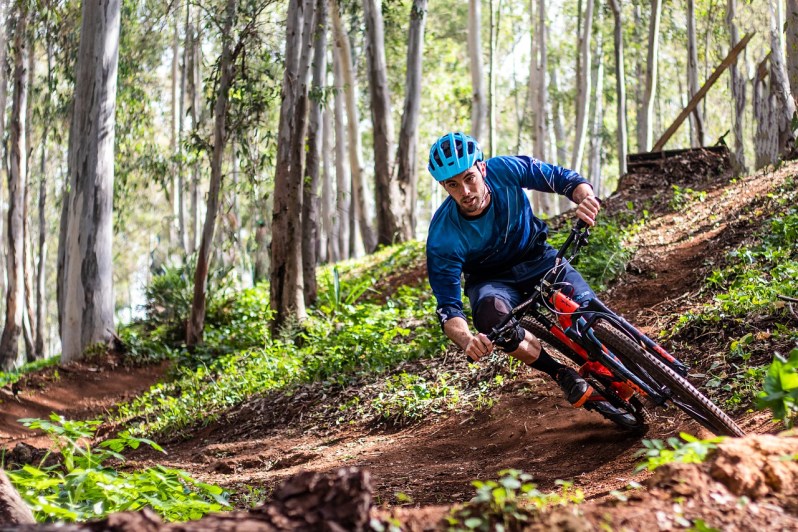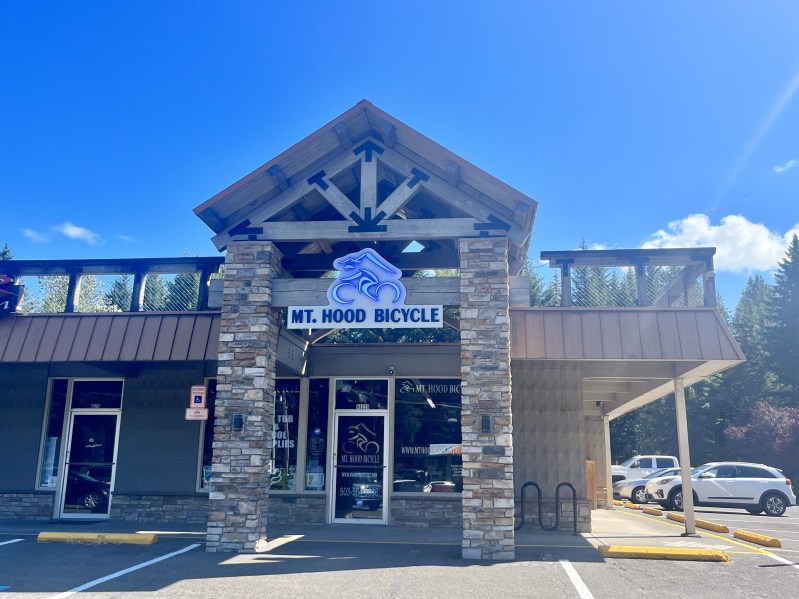
There is a lot of content out there with helpful tips on upgrades mountain bikers can make to their mountain bikes to have an overall better experience. However, the upgrades you make may quickly become unnoticeable if you aren’t performing regular mountain bike maintenance.
Regular mountain bike maintenance not only makes your bike perform better, but it will prolong the life of your mountain bike. Keeping your mountain bike and bike components clean and lubricated will save you money in the long run.

Bike maintenance: Wash your mountain bike
One of the most important aspects of mountain bike maintenance is keeping your mountain bike clean. Dust and dirt are actually one of the most harmful things to your bike. They coat your drivetrain, under dust seals, and get into your bearings.
And while a regular bike bath is important, there’s always a downside. High-pressure hose blasts can get water into the linkage bearings, causing them to rust. Similarly, blasting dust seals with too much water can cause water to get where it shouldn’t, like down into the stanchion seals on your fork.
Too much of a good thing can be a bad thing, even with mountain bike maintenance. Washing your bike is important, but knowing how and how often is what will prolong your mountain bike’s life, saving you money in the long run.
Get the necessary supplies
First, you’ll need a bike washing kit, which is pretty standard when it comes to mountain bike maintenance must-haves. These kits usually consist of a variety of brushes. Soft-bristle brushes are best for taking care of the frame, suspension, and wheels of the mountain bike, while firm brushes are great for the drivetrain.
The actual bike wash, the soap, is sometimes included in the kit but often sold separately. I prefer to use a mountain bike wash that is biodegradable. Both the bike wash and the brush kit can be found at your local bike shop as well as many sporting goods stores.
How to wash your mountain bike
- When hosing down your mountain bike, make sure the nozzle setting on the hose sprayer is in a gentler setting, such as “shower.” Stay away from settings such as “jet” that will penetrate dust seals and bearings.
- Soak the bike and proceed to spray on the bike wash. Focus especially on areas where dust accumulates, such as the suspension stanchions and the chain and gears. Leaving the suspension and drivetrain dirty is the most damaging thing you can do to your bike.
- Using a clean, microfiber rag, and alcohol, wipe the dust and dirt off the vital areas. Less exposure to water the bearings on your mountain bike get, the better.
Too much washing can be a bad thing, however. Depending on how dirty your bike gets, it is okay to go a few rides in between washes.

Bike maintenance: Lubrication is key
Having a clean bike is critical for good mountain bike maintenance, especially when it comes to the drivetrain. A dusty drivetrain wears out substantially faster than a clean one — unless you fail to lube your chain.
Just as dust and dirt eat away at the metal of your drivetrain, so does the friction of an unlubed chain on the gears. Always, after washing your bike, dry and lube the drivetrain. Your bike will thank you by remaining generally quiet as you shift gears.
Wet lube or dry lube? You need both
There are two types of chain lube that should be in your mountain bike maintenance kit—wet and dry. And the names correspond to the conditions you should use them in. Wet chain lube is for rainy, wet conditions, while dry lube is for those dry, dusty days.
Other than the name, what is the big difference? Wet lube is essentially waterproof. Splashing through a puddle won’t wash it off. The downside, however, is that wet lube tends to collect a lot of dirt while you ride.
Dry lube, on the other hand, does a much better job at keeping your chain and gears dirt and dust free. But, as you may have guessed, dry lube will wash off the minute you splash through a creek crossing. Keep that in mind, as it may be worth taking your shoes and socks off to walk through a creek rather than riding.
A couple of pointers:
- Don’t over-lube your chain, as this just leads to the collection of more dust.
- Also, some chain lubes require eight hours or so to let them set into the chain. Take this into your bike maintenance consideration and lube your chain the night before your ride.
- And definitely don’t lube a dirty chain. If your chain isn’t clean, no amount of chain lube will help.
Suspension lube is another lubrication to have in your mountain bike maintenance kit. Not only does suspension lube do the obvious—lubricate the stanchions on your suspension—it also helps pull any dust and dirt that has gotten underneath the suspension dust seals.

Bike maintenance: Get suspension service
Speaking of dust seals, a great way of making sure they are clean, as well as the rest of your suspension, is having your mountain bike’s suspension serviced. This bit of mountain bike maintenance will likely need to be done at your local bike shop.
Maybe you bought a new mountain bike, or maybe you’ve just decided to upgrade your bike’s fork; it is essential to keep track of how many hours you’ve ridden on your bike. Suspension companies have recommended service intervals for the life of their products.
Check the website of the particular suspension manufacturer on your mountain bike to figure out the suspension service intervals. Most recommend that you service your suspension at least yearly, or every hundred miles or so, whichever comes first.
Are you unaware of how many hours of riding time are on your mountain bike? Perhaps you don’t think you’ve logged over a hundred hours, but it has definitely been over a year. Take your bike to the shop and have a mechanic perform the service. Suspension service is substantially cheaper than new suspension.
Ruining your mountain bike because you were riding and had a big crash is a bummer. But, at least you have a story to tell. Ruining your bike simply because you didn’t take care of it is a much bigger bummer, and not a good story.
Editors' Recommendations
- Every rider should know these mountain bike climbing basics
- 3 things you need to know about mountain biking in Sedona
- Is the PEARL iZUMi X-Alp Launch mountain bike shoe for you?
- Hop on the best mountain bikes for under $1,000 – Trek, Specialized, and more
- 3 mountain bike trends we hope to see the industry adopt



